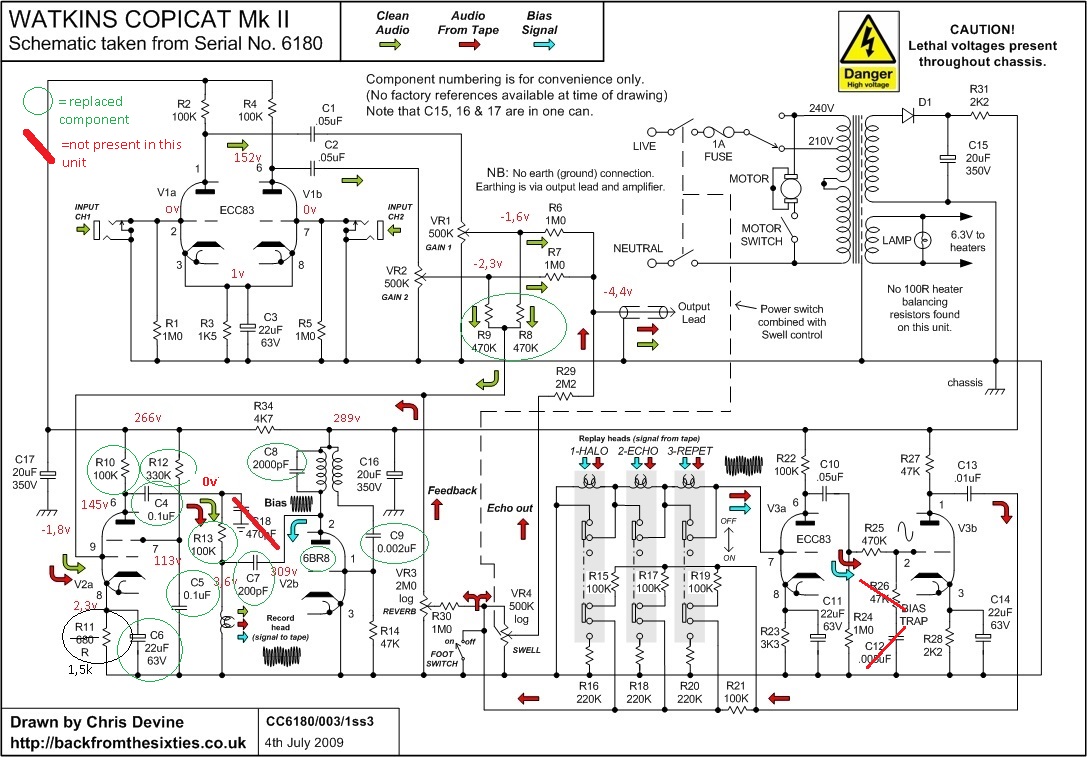My brother bought this thing, it's a Copicat Echo and need to be fixed cause it outputs a distorted sound.
I took this schematic as a reference, it's not the same but it looks very similar:


Heads seem a bit oxidized but in good shape. I cleaned and demagnetized them before start playing.
The direct out after first stage was really clean sounding but the delayed part was not...First thing i did was to look for biasing and found this 50 khz signal. Then i swapped tubes, only 12ax7 cause 6br8, the one that belongs to recording and biasing stage, is not as common. Looked for bad solder joints but everything seem to be ok on the board.
Then tried less conventional methods, i cut the recording head wire and made an output to my guitar amplifier to see what's going into recording. The sound was heavily distorted.
Then soldered back everything again and played a signal (first a sine then my guitar) directly to the record head (ugly ugly thing i know...) with bias osc stage always feeding the rec head. I found that it was distorting again but not as much as with first test.
Now i just ordered a 6br8. While waiting, do you have any idea or suggestions about any alternative and less obvious things (to me) that may be causing the distorting sound?
Later i measured the bias voltage with my oscilloscope and it was something like 380v p-p, is that ok?
Thank you
Omaroski
I took this schematic as a reference, it's not the same but it looks very similar:


Heads seem a bit oxidized but in good shape. I cleaned and demagnetized them before start playing.
The direct out after first stage was really clean sounding but the delayed part was not...First thing i did was to look for biasing and found this 50 khz signal. Then i swapped tubes, only 12ax7 cause 6br8, the one that belongs to recording and biasing stage, is not as common. Looked for bad solder joints but everything seem to be ok on the board.
Then tried less conventional methods, i cut the recording head wire and made an output to my guitar amplifier to see what's going into recording. The sound was heavily distorted.
Then soldered back everything again and played a signal (first a sine then my guitar) directly to the record head (ugly ugly thing i know...) with bias osc stage always feeding the rec head. I found that it was distorting again but not as much as with first test.
Now i just ordered a 6br8. While waiting, do you have any idea or suggestions about any alternative and less obvious things (to me) that may be causing the distorting sound?
Later i measured the bias voltage with my oscilloscope and it was something like 380v p-p, is that ok?
Thank you
Omaroski











